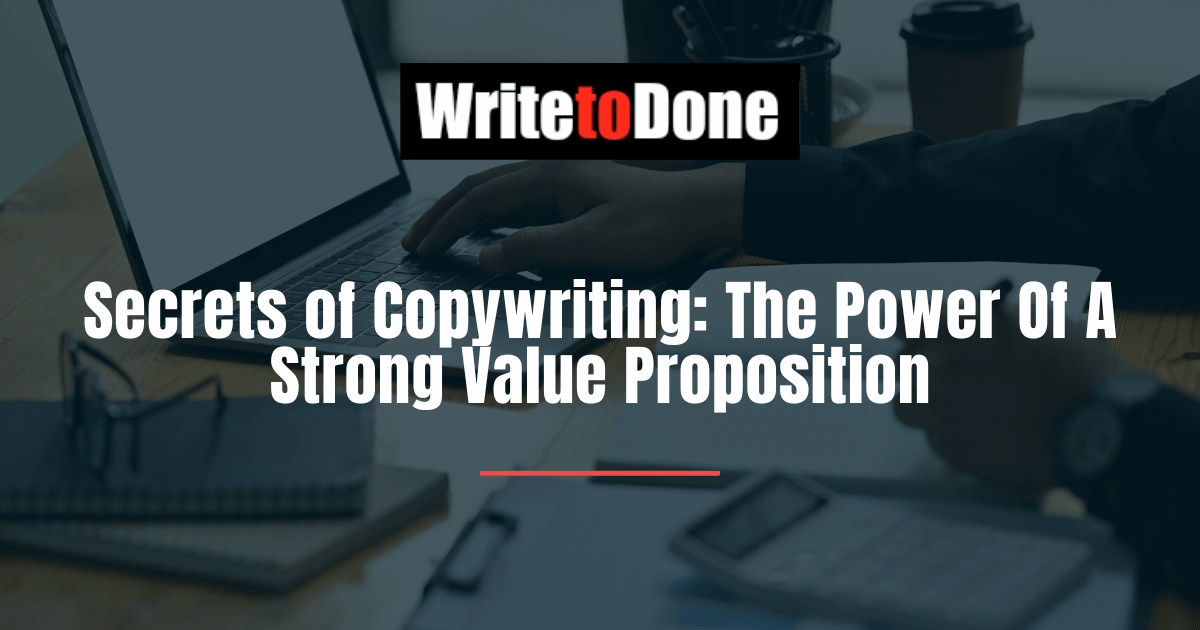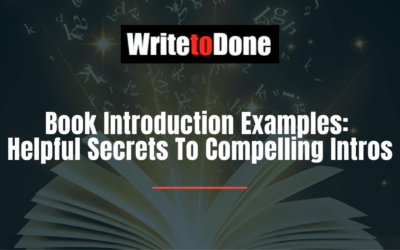Have you ever tried to write something persuasive and felt that you’re not getting it right?
Maybe your writing feels generic. Maybe it’s disorganized, or too pushy. Maybe … you just don’t know. And readers don’t take the action you’re hoping for. Does this sound familiar?
If you don’t sell the product or get the subscribers, the time you spent writing has been wasted. The waste is twofold: you don’t get the results you hoped for, and your potential customers — your readers — lose faith.
But some people get their writing to work like magic—every time. Each word, every sentence just pulls the reader along until they subscribe to the blog or buy the product.
It might look like magic, but it’s not. All it takes is a few sentences.
What you are missing is: your value proposition.
What is a value proposition?
Your value proposition describes your unique value.
Your unique value is what your competitors can’t or don’t offer, but it’s what your customers want.
For example, you might offer the greatest expertise, lowest prices, fastest delivery, best customer service, largest selection, highest quality, or simply a trendy specialty.
Your value proposition should be a combination of a few unique and valuable characteristics or qualities.
Why you should identify your value proposition
A value proposition is a collection of the most compelling reasons for people to buy or sign up for your product or service.
It is what makes people care about what you say.
If your sales or landing page doesn’t give readers a great reason to read on, they’re not going to do it. And they surely won’t subscribe to your list or buy your product if you haven’t got them thinking about the value.
It doesn’t matter if you have something great to offer. It doesn’t matter if your email list or product is the best in the world.
All that matters is whether the reader perceives the action—buying, subscribing, and so on—to be worthwhile, to be of value to them.
If you don’t understand how to manage a reader’s perception, you can’t persuade them to do what you want.
Without that knowledge, you’re writing blind—hoping to say the right things in the right order in the right way to get the result you want.
It’s like trying to play chess without seeing the other player’s moves.
And many bloggers and business people attempt to do exactly that. They don’t have a clear vision of the key ideas that will persuade their readers.
Yet they wonder why their business or blog isn’t growing.
Those key ideas, which make all the difference, form your value proposition.
Making people believe your value proposition
But being unique and valuable isn’t enough; people need to believe you, too.
Your word has little weight out here in the blogosphere. You can say you’re the best or your product is the greatest in every way imaginable. And people won’t believe any of it.
Not unless you give them a reason.
That can mean testimonials, statistics, studies, and/or common sense. But you need something to back up your claims. Otherwise people disregard your words as “marketing talk.”
In many cases, someone might write a pretty good sales or landing page but forget to include a reason to believe any of it.
The proof doesn’t have to be as obvious as “here’s a study that proves what I said”. Instead you could say, “according to study XYZ” and then make the claim.
If a part of your value proposition is to offer the lowest prices, don’t just say your prices are the lowest. Give a lowest-price guarantee.
If you call your product better than its alternatives, explain exactly how it is better.
If you say you’re an expert at something, have other experts support your claim with testimonials rather than just calling yourself an expert.
Don’t let your sales or landing page fail just because people don’t believe what you’re saying.
How to infuse your value proposition into your writing
When you have a strong value proposition and you know how to prove everything in it, you need to use it in your sales copy.
The effectiveness of your writing relies heavily on how well you infuse your value proposition into it.
It’s a collection of the most persuasive arguments you have, much like the psychological strings you need to weave into your copy.
If you forget to use them, you won’t persuade anyone to buy from you, except those in the most desperate need of your product.
But if you have a fully developed and refined value proposition, you’re likely to experience the seemingly magical ‘ads write themselves’ effect. So it’s unlikely that you’d forget to use it.
Here are a few guidelines to keep in mind:
1. Use your headline to give a clear idea of at least one part of your value proposition. The concept behind the headline is much more important than the exact headline formula you use, though both impact your results.
2. Dedicate at least one sub-headline (and the following section) for each of the core concepts of your value proposition. These are the ideas that are most likely to persuade the reader, so don’t shy away from them.
3. Tie all your product’s features to your value proposition. Don’t just casually mention something in your sales copy. Instead, explain why that particular concept or element helps deliver one or more of the core concepts of your value proposition.
Of course, you can’t do any of this if you don’t know what your value proposition is.
If you’re trying to persuade someone to do something—buy a product or service or just subscribe to your blog—take the time to figure it out. Even the newest or smallest blog or business has a value proposition. What’s yours?
Use the comments to tell us what makes you, your blog, your email list, or your product special. Why should people pay attention to it? And why should they believe what you’re saying?
And if you have any questions, don’t hesitate to ask them.
















